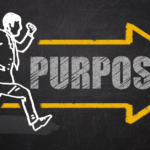As someone who has experienced the transformative power of Christian meditation in managing chronic pain, I’m excited to share this practice with you. When debilitating pain first struck me, resistant to conventional treatments, I felt lost and disconnected from my faith.
Discovering Christian meditation opened a new path to healing and spiritual growth that profoundly impacted both my physical and spiritual well-being.
This guide combines ancient spiritual wisdom with modern pain management techniques, offering a holistic approach that addresses both the physical and spiritual aspects of chronic pain. Let’s explore how you can harness the power of Christian meditation to find relief, comfort, and renewed connection with God amidst your pain journey.
Understanding the Foundations of Christian Meditation for Pain Management
Christian meditation for chronic pain involves focusing your mind and heart on God through Scripture, prayer, and contemplative exercises. This practice is deeply rooted in biblical teachings and the rich contemplative traditions of the Church, offering a unique perspective on pain and suffering that can provide comfort and relief to those struggling with persistent pain.
The theoretical background of this approach draws from both theology and neuroscience. Theologically, it’s grounded in the biblical understanding of suffering as a potential catalyst for spiritual growth and the concept of finding strength in weakness, as described in 2 Corinthians 12:9-10.
From a neuroscientific perspective, research has demonstrated that meditation can alter pain perception by modulating brain activity in regions associated with pain processing.
Key Techniques in Christian Meditation for Pain Management
- Scriptural Meditation: This involves deeply reflecting on specific Bible verses related to healing, comfort, and God’s presence in suffering.
- Contemplative Prayer: A form of prayer that emphasizes silence and listening to God, rather than speaking.
- Guided Christian Visualization: Using mental imagery to envision healing, often incorporating biblical scenes or symbols.
- Breath Prayers: Short, repetitive prayers synchronized with your breathing to promote relaxation and focus on God.
One of the primary challenges in implementing Christian meditation for chronic pain is consistency. Pain can be distracting and demotivating, making it difficult to maintain a regular practice.
To overcome this, start with short, manageable sessions and gradually increase duration as you build the habit.
Implementing Christian Meditation for Chronic Pain: A Step-by-Step Guide
1. Create a Sacred Space
Designate a quiet, comfortable area for your meditation practice. This could be a corner of your bedroom, a favorite chair in your living room, or even a peaceful spot in your garden.
The key is to choose a place where you feel at ease and can minimize distractions.
2. Choose Your Focus
Select a Bible verse, prayer, or sacred word to center your meditation. For example, you might choose Psalm 23:4: “Even though I walk through the darkest valley, I will fear no evil, for you are with me.” Other powerful verses for pain management include:
- Isaiah 41:10: “So do not fear, for I am with you – do not be dismayed, for I am your God. I will strengthen you and help you – I will uphold you with my righteous right hand.”
- Philippians 4:13: “I can do all this through him who gives me strength.”
- Psalm 34:18: “The Lord is close to the brokenhearted and saves those who are crushed in spirit.”
3. Prepare Your Body
Find a comfortable position that you can maintain for the duration of your meditation. This might be sitting in a chair, lying down, or even a gentle walking meditation if movement helps manage your pain. Use pillows or blankets to support your body as needed.
4. Begin with Breath Awareness
Take a few deep breaths, focusing on the sensation of air moving in and out of your body. As you breathe, imagine God’s healing presence entering your body with each inhale.
You might visualize this as a warm, golden light filling your lungs and spreading throughout your body.
5. Introduce Your Chosen Focus
Slowly repeat your chosen verse or prayer, either silently or in a soft whisper. Allow the words to sink deeply into your consciousness.
For example, if using Psalm 23:4, you might break it down like this:
- Inhale: “Even though I walk through the darkest valley,”
- Exhale: “I will fear no evil,”
- Inhale: “For you are with me.”
Repeat this cycle several times, allowing the rhythm of your breath to carry the words into your heart.
6. Engage in Visualization
If using a guided Christian visualization, imagine Jesus laying His hands on the areas of your body affected by pain. Visualize His healing light flowing through you, bringing comfort and relief. You might picture yourself in a biblical scene, such as sitting by the pool of Bethesda or touching the hem of Jesus’ garment.
7. Practice Presence
As thoughts or pain sensations arise, gently thank them without judgment, then return your focus to God’s presence. Remember, the goal is not to eliminate all thoughts or sensations, but to cultivate an awareness of God amidst your pain. You might use a simple phrase like “Here I am, Lord” to refocus your attention.
8. Close with Gratitude
End your meditation by offering thanks to God for His presence and any moments of peace or relief you experienced during the practice. You might use a prayer like:
“Thank you, Lord, for your constant presence in my life, even in the midst of pain. I am grateful for this time of connection with you. Help me carry your peace with me throughout my day. Amen.”
Common Pitfalls and How to Avoid Them
Expecting Immediate or Complete Pain Relief
While some people may experience significant pain reduction through Christian meditation, for others, the primary benefit may be improved emotional coping and spiritual connection. Set realistic expectations and focus on the holistic benefits of the practice.
To avoid disappointment, keep a meditation journal. Record changes in pain levels and improvements in mood, sleep quality, and spiritual insights.
This can help you recognize the broader positive impacts of your practice.
Spiritual Doubt or Frustration
If pain continues despite faithful practice, you might experience spiritual doubt or frustration. Remember that Christian meditation strengthens your relationship with God regardless of circumstances.
It’s not about earning healing through spiritual effort.
To address this, study biblical examples of faithful individuals who experienced ongoing suffering, such as Paul’s “thorn in the flesh” (2 Corinthians 12:7-10) or Job’s trials. Reflect on how their faith deepened through adversity.
Inconsistency in Practice
Pain can make it challenging to maintain a regular meditation routine. To overcome this:
- Start small: Begin with just 5 minutes a day and gradually increase.
- Set reminders: Use phone alerts or link your practice to daily activities (e.g., after breakfast).
- Be flexible: If sitting meditation is difficult one day, try a walking meditation or listen to guided Christian meditations while lying down.
Difficulty Focusing
Pain can make concentration challenging. If you find your mind wandering often:
- Use anchor phrases: Return to a simple phrase like “Jesus, be with me” when distracted.
- Incorporate physical elements: Hold a cross or prayer beads to provide a tactile focus.
- Try different times of day: Experiment to find when your pain is typically less intense.
To avoid these pitfalls, maintain an attitude of openness and surrender. View your meditation practice as a time of intimate communion with God rather than solely a pain management technique.
Adapting Christian Meditation to Different Pain Scenarios
Christian meditation can be tailored to various pain situations:
For Acute Pain Flare-Ups
Focus on short, intense periods of meditation using breath prayers or visualizations of Jesus’ healing touch. You might repeat a simple prayer like “Jesus, heal me” in rhythm with your breath, or visualize Christ’s light dissolving areas of intense pain.
For Chronic, Persistent Pain
Develop a daily meditation routine that incorporates longer periods of scriptural reflection and contemplative prayer. This might include:
- Morning meditation: Start your day with 15-20 minutes of scriptural reflection, focusing on verses about God’s strength and comfort.
- Midday check-in: Take a 5-minute break to practice breath prayers and realign your focus on God’s presence.
- Evening contemplation: End your day with 10-15 minutes of silent contemplative prayer, resting in God’s love.
For Pain-Related Insomnia
Use guided Christian meditations specifically designed for sleep, focusing on restful biblical imagery like “lying down in green pastures” (Psalm 23:2). You might create a bedtime routine that includes:
- Gentle stretching or yoga while reciting calming Scripture verses.
- Progressive muscle relaxation combined with prayers of surrender for each part of your body.
- Listening to audio recordings of soothing Bible passages or Christian sleep meditations.
Building on Basics to Achieve Mastery
As you become more comfortable with basic Christian meditation techniques, you can deepen your practice by:
Exploring Different Contemplative Traditions
Investigate various contemplative practices within Christianity, such as:
- Centering Prayer: A method of silent prayer that prepares us to receive the gift of contemplative prayer, in which we experience God’s presence within us.
- The Jesus Prayer: A short, repeated prayer that goes, “Lord Jesus Christ, Son of God, have mercy on me, a sinner.” This practice, rooted in Eastern Orthodox tradition, can be synchronized with your breath.
- Lectio Divina: A traditional Benedictine practice of scriptural reading, meditation, and prayer intended to promote communion with God and increase the knowledge of God’s word.
Incorporating Physical Practices
Combine gentle physical movement with Christian meditation principles:
- Christian Yoga: Adapt traditional yoga poses to include Scripture meditation and prayer.
For example, practice “mountain pose” while reflecting on God as your rock and fortress.
- Tai Chi with Scripture: Perform slow, flowing tai chi movements while reciting or meditating on Bible verses.
The physical flow can represent the flow of God’s grace in your life.
- Prayer Walks: Take slow, mindful walks in nature while praying or meditating on Scripture.
Use the beauty of creation to inspire worship and reflection.
Studying Christian Mystics and Contemplatives
Deepen your understanding of Christian meditation by exploring the writings of mystics and contemplatives:
- St. Teresa of Avila: Her work “The Interior Castle” offers profound insights into the stages of spiritual growth and intimacy with God.
- Thomas Merton: A 20th-century Trappist monk whose writings bridge contemplative practice with modern life.
- Julian of Norwich: A medieval mystic whose “Revelations of Divine Love” offers comforting perspectives on God’s love amidst suffering.
- Brother Lawrence: His practice of the presence of God in everyday tasks can inspire a more integrated approach to meditation and daily life.
Exercises to Reinforce Learning
Scripture Journaling
Spend 15 minutes each day meditating on a different Bible verse related to healing or comfort. Journal about how the verse speaks to your pain experience.
Consider the following prompts:
- What does this verse reveal about God’s character?
- How does this verse challenge or comfort me in my current pain situation?
- What practical step can I take today to apply this verse to my life?
Body Scan Prayer
Conduct a slow body scan, praying for each part of your body, especially areas affected by pain. Express gratitude for your body’s resilience and ask for God’s healing presence. You might use a prayer like:
“Lord, I bring my [body part] before you. Thank you for it’s design and function. Where there is pain, I ask for your healing touch. Where there is tension, I invite your peace. Help me to steward this part of my body with wisdom and grace. Amen.”
Meditative Art
Create a piece of art (drawing, painting, or collage) that represents your pathway of pain and healing through Christian meditation. Use this as a visual focus for future meditation sessions.
Consider including:
- Symbols or images from Scripture that have been meaningful in your meditation practice.
- Colors that represent different aspects of your progress (e.g., dark colors for pain, bright colors for hope and healing).
- Words or phrases that have become anchors in your meditation practice.
As you create, pray and reflect on how God has been present in your pain journey. Display your artwork in your meditation space as a reminder of God’s faithfulness and your growth.
Frequently Asked Questions
How does Christian meditation differ from other forms of meditation?
Christian meditation focuses on connecting with God through Scripture, prayer, and contemplation. Unlike some other forms of meditation that aim to empty the mind, Christian meditation fills the mind with God’s truth and presence.
Can Christian meditation replace medical treatment for chronic pain?
Christian meditation should complement, not replace, medical treatment for chronic pain. Always talk to your healthcare provider before making changes to your pain management plan.
How long should I meditate each day for pain relief?
Start with 5-10 minutes daily and gradually increase as you’re able. Consistency is more important than duration.
Even short, regular sessions can be useful.
What if I fall asleep during meditation?
Falling asleep occasionally is normal, especially when dealing with chronic pain and fatigue. If it happens often, try meditating at a different time of day or in a seated position.
Can I practice Christian meditation if I’m new to faith or have doubts?
Absolutely. Christian meditation can be a way to explore and deepen your faith.
Be honest with God about your doubts and use meditation as a time to seek understanding and connection.
How do I know if Christian meditation is working for my pain?
Look for improvements in overall well-being, not just pain levels. This might include better sleep, reduced anxiety, improved mood, or a stronger sense of God’s presence in your life.
Is it normal to experience emotional releases during Christian meditation?
Yes, it’s common to experience emotional releases as you connect with God and process your pain experience. Allow yourself to feel these emotions in God’s presence without judgment.
Can children or teens practice Christian meditation for pain management?
Yes, Christian meditation can be adapted for children and teens. Use age-appropriate language and shorter sessions, incorporating more active forms of meditation like prayer walks or creative visualization.
How does Christian meditation affect brain function in relation to pain?
Research suggests that meditation can alter pain perception by changing brain activity in areas related to pain processing, emotional regulation, and attention. Christian meditation may have similar effects while also providing spiritual comfort.
Are there any potential risks or side effects of Christian meditation?
Christian meditation is generally safe. However, some people may experience temporary discomfort as they confront difficult emotions or memories.
If you have a history of trauma or mental health concerns, consult a therapist or spiritual director before beginning an intensive meditation practice.
Key Takeaways
- Christian meditation offers a powerful, faith-based approach to chronic pain management that addresses both physical and spiritual needs.
- Consistency and realistic expectations are crucial for experiencing the full benefits of the practice.
- Adapting meditation techniques to your specific pain scenario can enhance their effectiveness.
- Regular practice can lead to improved pain coping, emotional well-being, and spiritual growth.
- Combining Christian meditation with other pain management strategies provides a holistic approach to healing.




